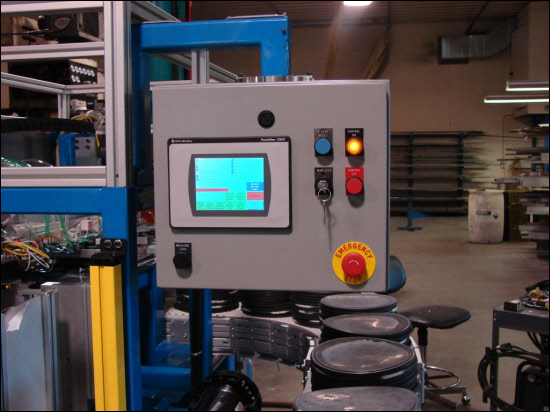Computers in the workplace
Computers
have helped advance the production of many industries, specifically
manufacturing and production. “An
important component of industrial computers is the programmable logic
controller, or PLC, used to automate production and processes. In recent years,
improved PAC, programmable automation controller, technology has been developed”
(2019). PCL’s have been used to automate
production equipment such as robotic devices, assembly lines. The PLC also is a fault device that tells the
human when a production equipment has faulted and needs attention.
“The
PLC receives information from connected sensors or input devices, processes the
data, and triggers outputs based on pre-programmed parameters. Depending on the inputs and outputs, a PLC
can monitor and record run-time data such as machine productivity or operating
temperature, automatically start and stop processes, generate alarms if a
machine malfunctions, and more. Programmable Logic Controllers are a flexible and
robust control solution, adaptable to almost any application” (Unitronics,
2019). The PLC receives the information
from the input of a human from the Human Machine Interface (HMI). The HMI can be simple displays, with a
text-readout and keypad, or large touchscreen panels and they enable users to
review and input information to the PLC in real time.
It
was from the automotive industry in the USA that the PLC was first used to
increase productivity. Before PLC’s, the
change over to new yearly models was a longer process. The industrial PC as we know it today
appeared in the 1980s. Industrial
computers are more rugged than home computers, designed for use in environments
that may be hot, cold, dusty, or wet, and their software does not require
updating as frequently (2019).
The
advancement of computers in the manufacturing industry has brought about
conversation of job loss for humans to robots.
“Approximately 50% of Flex’s manufacturing processes are already fully
automated. Automation enables a level of accuracy and productivity beyond human
ability—even in environments that would be considered unsafe for humans. The
new generation of robotics is not only much easier to program, but easier to
use, with capabilities like voice and image recognition to re-create complex
human tasks. Another advantage of robots is that they do precisely what you ask
them to do – nothing more, nothing less. And while automation eliminates some
of the most tedious manufacturing jobs, it is also creating new jobs for a
re-trained workforce” ("Five Trends For The Future Of Manufacturing",
2019).
Computers
in the manufacturing industry have made factory jobs easier for the humans that
work on the factory floor. I have worked
in multiple factory setting in the last 15 years and I love how computers have
cut down on the physical work. I
currently work at a solar panel manufacturing factory and the process it takes
to make the solar panels would not be possible without computers. Computers helped greatly with my job as a
manufacturing operations technician, in that most of my job is to monitor and
troubleshoot robots. I have seen how the
amount of less physical work makes my co-workers and myself do less physical
work which leads to less stress on the body as people get older.

No comments:
Post a Comment